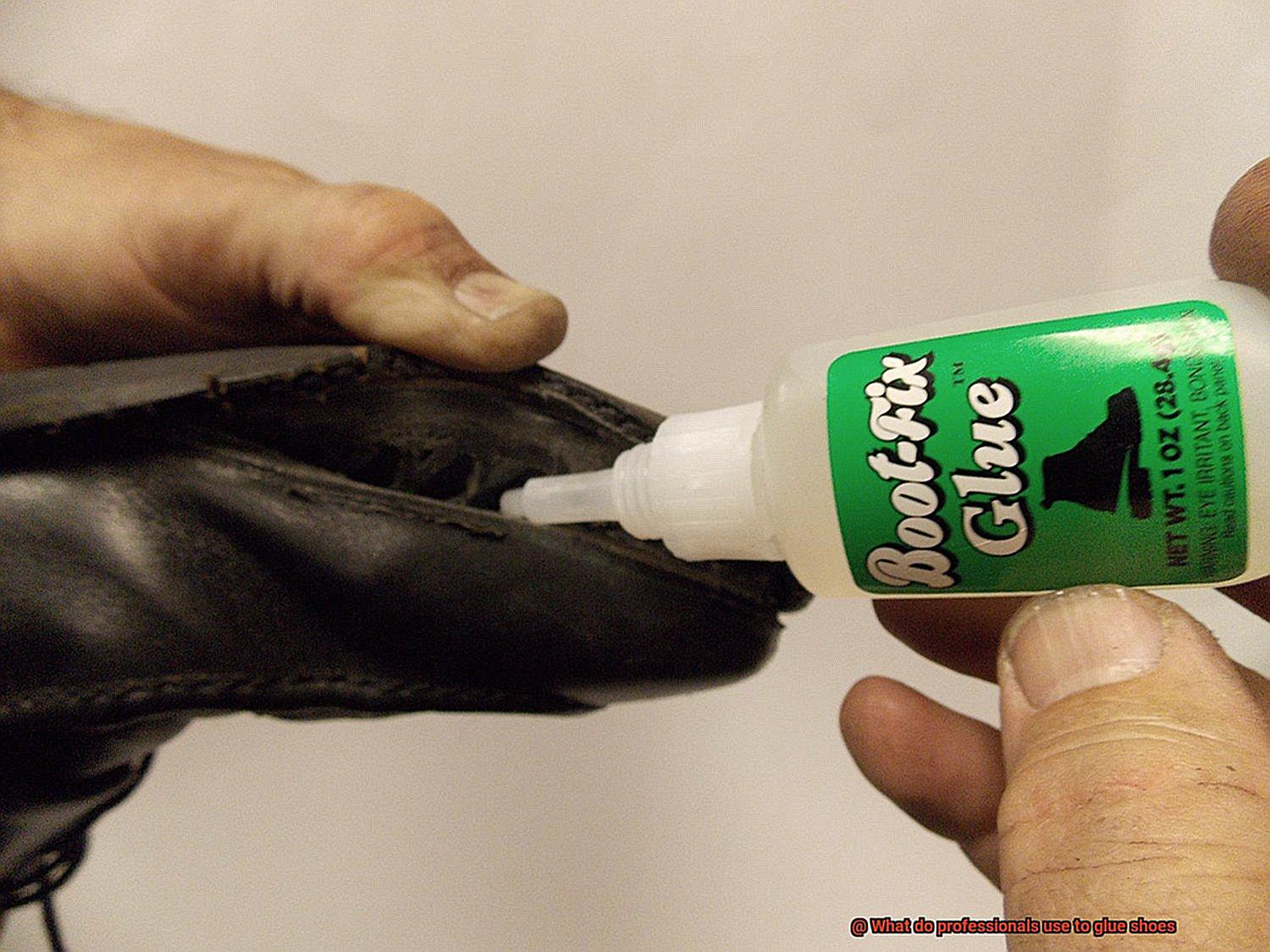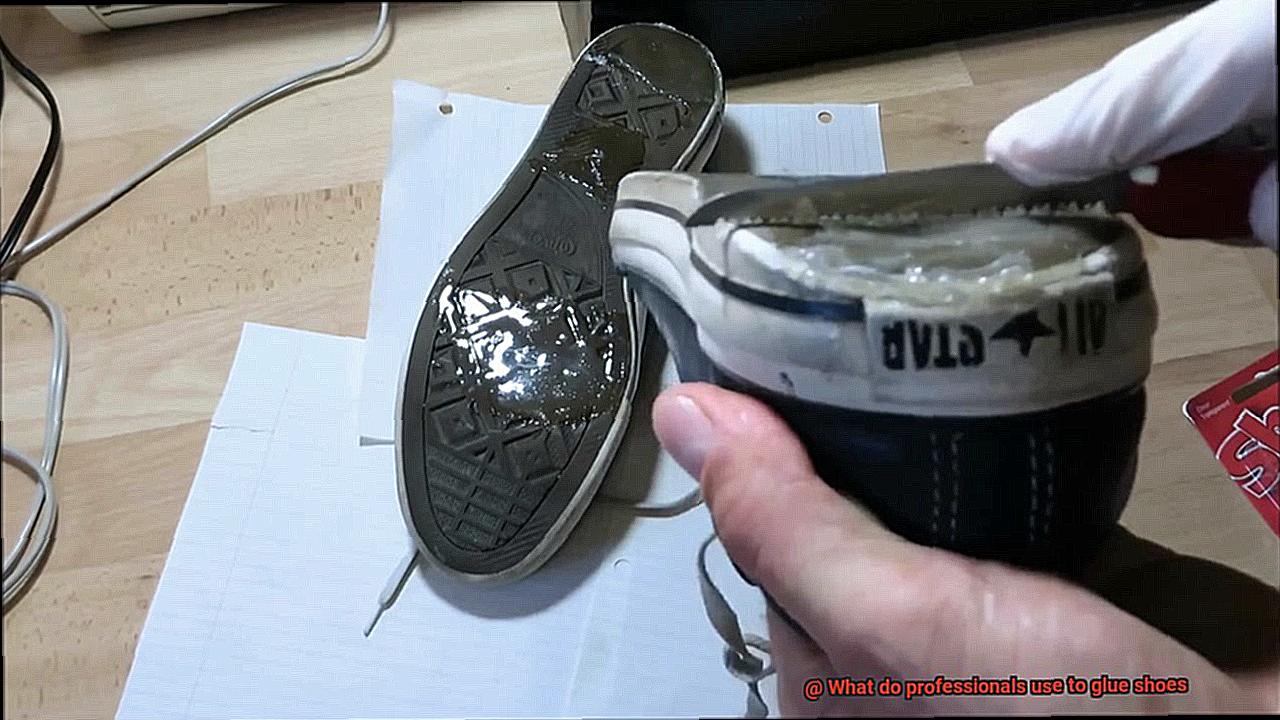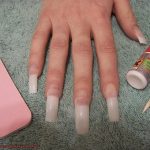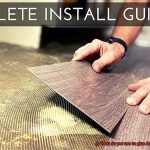Ever wondered what it takes to create those flawless shoes that feel like they were custom-made for your feet and can survive anything? Well, my fellow shoe aficionados, today is your lucky day. We’re about to dive deep into the mystical realm of shoe manufacturing and unveil the secret sauce professionals use to glue shoes together.
Imagine the horror of watching your favorite pair fall apart after just a few weeks of wear. Terrifying, right? Thankfully, professional shoemakers have mastered the art and science of crafting shoes that stand the test of time, starting with the perfect adhesive.
Choosing the right glue is crucial in shoe manufacturing because it determines how strong, durable, and flexible your footwear will be. Professionals rely on specially formulated glues that possess superpowers – defying gravity, enduring extreme temperatures, and seamlessly bonding different materials while keeping comfort and style intact.
While ordinary glues might do the trick for small fixes or DIY projects, pros demand something extraordinary – adhesive that goes beyond what you find on store shelves. These experts often turn to adhesives specifically designed for shoe manufacturing, like solvent-based contact cements and polyurethane-based glues. These exceptional glues ensure a bond that can withstand the rigors of everyday wear.
In the following sections, we’ll explore the top adhesive choices used by professionals in the shoe industry. From unraveling the unique properties of contact cements to discovering the wonders of polyurethane-based glues, we’ll take you behind-the-scenes into a world where craftsmanship reaches unparalleled heights.
Get ready for an exclusive journey through shoe manufacturing as we uncover the magical glues that bring dreams to life. Prepare to be amazed by versatile techniques and remarkable adhesives used by professionals who guarantee you high-quality shoes worth cherishing for years.
So kick back, slip into your comfiest kicks, and get ready to immerse yourself in the enchanting world of glues that make those beautiful creations possible.
Types of Shoe Glues: What are the Different Kinds?
Contents
- 1 Types of Shoe Glues: What are the Different Kinds?
- 2 Factors Influencing Glue Selection: What Should I Consider?
- 3 Adhesive Application Techniques: How Can I Apply the Glue Properly?
- 4 Contact Adhesives: What Are Their Benefits and Drawbacks?
- 5 Epoxy Resins: What Makes Them Ideal for Repairing Heavy-Duty Shoes?
- 6 Cyanoacrylate Glues: How Do They Differ from Other Adhesives?
- 7 Polyurethane Adhesives: Why Are They Used in Athletic Shoe Manufacturing and Repairing?
- 8 Surface Preparation for Glue Application: Tips for a Successful Bond
- 9 Conclusion
Do your favorite shoes need a little tender loving care? Don’t fret, because with the right shoe glue, you can easily revive them. In this comprehensive guide, we will explore the world of shoe glues and uncover the different types that professionals swear by. Get ready to learn how to fix your shoes like a true expert.
Contact Cement: Unleash the Power of Strong Bonds
When it comes to shoe repairs, contact cement is an absolute superhero. This exceptional glue forms an unbreakable bond by applying it to both surfaces and waiting for it to dry until it becomes tacky. Once pressed together, it creates a bond that can withstand even the toughest challenges. Whether you need to reattach a loose sole or join different materials like leather or fabric, contact cement is the ultimate go-to glue for professionals.
Epoxy Adhesive: The Heavy-Duty Fixer You Need
For those heavy-duty shoe repairs, look no further than epoxy adhesive. This powerhouse adhesive consists of two parts – a resin and a hardener. When mixed together, they create a chemical reaction that results in a bond so strong, it can withstand the harshest conditions. If you need to repair hiking boots, work shoes, or even metal components in your beloved kicks, epoxy adhesive is your best friend. Just mix the resin and hardener, apply it to the damaged area, and watch the magic happen.
Cyanoacrylate Glue: A Quick Fix for Small Repairs
Ever wondered how professionals fix small tears or attach delicate shoe parts? Enter cyanoacrylate glue, also known as super glue. This fast-acting adhesive works wonders by bonding quickly and creating an instant bond upon contact with moisture. It’s perfect for those urgent repairs that require immediate attention. Just be cautious not to use an excessive amount, as it can result in a brittle bond.
Polyurethane Adhesive: The Ultimate Combination of Flexibility and Waterproofing
When it comes to athletic shoes or footwear that requires flexibility and waterproofing, polyurethane adhesive is your answer. Known for its exceptional strength and flexibility, this glue can withstand harsh conditions and extreme temperatures. It’s the ideal choice for repairing shoes that undergo frequent stress or impact. So whether you’re a sports enthusiast or need to fix your trusty running shoes, reach for polyurethane adhesive and get back in the game.
Specialized Glues: Tailored Solutions for Specific Needs
In some cases, specific shoe materials require specialized glues. Rubber cement and leather glue are formulated specifically for bonding rubber or leather materials. These glues provide a strong and long-lasting bond while remaining flexible enough to accommodate movement. If you have a pair of rubber boots or leather shoes in need of repair, these specialized glues are your ultimate companions.
Factors Influencing Glue Selection: What Should I Consider?
When it comes to gluing shoes, selecting the perfect glue is essential for achieving a strong and long-lasting bond. With numerous factors influencing glue selection, it’s important to consider each aspect carefully.
In this article, we will explore the key considerations when choosing glue for your shoes. So, let’s delve into the fascinating world of adhesive selection.
Material Compatibility:
Shoes are crafted from a variety of materials such as leather, rubber, fabric, and synthetics. Each material has its unique properties and requires a specific adhesive for optimal bonding. Leather shoes necessitate a specialized leather adhesive that deeply penetrates the porous surface, creating an unbreakable bond. Conversely, rubber soles demand a flexible adhesive capable of withstanding constant flexing and bending without compromising grip.
Bond Strength:
The desired strength of the bond is a crucial factor to consider when selecting glue for your shoes. Depending on the application, different levels of bond strength may be required. Repairing a loose sole may only require a medium-strength adhesive, while attaching an outsole to a shoe upper demands a stronger adhesive capable of enduring the stress and strain during wear. Carefully assess the intended use of the shoe and choose a glue that offers the appropriate level of bond strength.

Drying Time:
For professionals working under tight schedules or requiring quick repairs, drying time becomes a significant consideration. Some adhesives possess quick-drying properties, facilitating faster turnarounds. However, others necessitate longer curing times to achieve optimal bond strength. Striking the perfect balance between speed and durability is essential when selecting a glue with an appropriate drying time.
Waterproof Properties:
Considering the waterproof properties of the glue is vital to ensure the longevity of your shoe’s bond. Shoes often encounter exposure to water and moisture, especially in rainy or snowy conditions. Waterproof adhesives create a protective barrier, preventing water from seeping into the bond and safeguarding it against weakening or deterioration over time. This factor holds particular importance for outdoor shoes or those utilized in wet environments.
Application Method:
Efficiency and effectiveness are paramount, especially for professionals completing multiple repairs. Choosing glues that come in squeeze bottles with precision applicators makes the application process easier and more precise. This not only saves time but also avoids messy application, resulting in a neat and professional-looking repair.
Adhesive Application Techniques: How Can I Apply the Glue Properly?
Unlock the secrets of flawless shoe repairs with expert adhesive application techniques. From ensuring a pristine surface to achieving the perfect amount of glue, let’s explore the captivating world of gluing shoes and achieve unbreakable bonds.
Cleanse for Success:
Prepare for gluing greatness by thoroughly cleansing the shoe’s surface. Bid farewell to dirt, dust, and debris that threaten the bond. A gentle soap and warm water cleanse will set the stage for perfection. Remember, a clean canvas is the first step towards an impeccable bond.
Choose Your Magic Potion:
Not just any adhesive will do when it comes to shoes. The professionals swear by specialized adhesives crafted solely for shoe repair or construction. These enchanting formulas are designed to create unyielding bonds on various shoe materials like leather, rubber, or fabric. So, choose your adhesive wisely and let it work its magic.
The Delicate Dance of Application:
In the art of gluing shoes, a delicate touch is required. Apply a thin and even layer of glue to ensure bonding nirvana. Utilize the brush or applicator provided with your adhesive for precision and consistency. Beware of excess glue seeping out like an unruly guest crashing a party. We want nothing but finesse in our adhesive application.
Embrace Moderation:
Adhesive gluttony leads to disaster in the world of glue application. Too much glue creates unsightly bulges and stains while weakening the bond between shoe materials. Embrace moderation and apply sparingly, adding more if needed. Remember, it’s better to be conservative and add a touch more than drown your shoes in excess glue.
Patience: A Virtue for Bonding:
Patience, my dear friend. Once the glue is artfully applied, it’s time to let it work its magic. Different adhesives boast varying drying times, so channel your inner detective and follow the manufacturer’s instructions. Rushing this step invites weak bonds and premature detachment. So, relax, sip your tea, and let the glue dry in all its glory.
Contact Adhesives: What Are Their Benefits and Drawbacks?
Today, we embark on a thrilling journey into the realm of these magical potions, exploring their benefits and drawbacks. So, gear up and get ready to discover the secrets of contact adhesives.
Benefits of Contact Adhesives:
- Instant Bonding: Imagine a world where time is no longer your enemy. With contact adhesives, this dream becomes a reality. These remarkable adhesives possess high initial tack, instantly forming a strong bond upon contact with various surfaces. Say goodbye to waiting and hello to efficiency.
- Flexibility: Shoes are made for movement, and so are contact adhesives. Once applied and dried, these adhesives maintain their flexibility, allowing your shoes to bend and flex without compromising the bond. Dance, run, or jump with confidence – your shoes will keep up with your every step.
- Resistance to Heat and Moisture: Nature can throw its worst at your beloved shoes, but contact adhesives won’t let them down. Engineered to withstand heat, humidity, and water, these adhesives ensure that your shoe’s bond remains intact in any challenging condition. From scorching summers to unexpected rain showers, your shoes will stay strong.
Drawbacks of Contact Adhesives:
- The Pungent Perfume: Ah, the scent of adhesive in the air. Unfortunately, contact adhesives come with a strong odor during application and drying. To avoid feeling overwhelmed, make sure you work in a well-ventilated area. Embrace fresh air as your ally in combating the stinky situation.
- Precision Matters: Contact adhesives demand precision like a maestro conducting an orchestra. To achieve optimal results, apply an even layer of adhesive to both surfaces, allowing it to dry to the touch before joining them together. Rushing this step may lead to a weak bond or uneven adhesion. Stay focused and let your precision shine.
- Irreversible Commitment: Once contact adhesives do their magic, there’s no turning back. They create an irreversible bond that can be challenging to undo without causing damage. Keep this in mind during repairs or adjustments after the adhesive has dried. Plan carefully and execute flawlessly to avoid irreversible mistakes.
Epoxy Resins: What Makes Them Ideal for Repairing Heavy-Duty Shoes?
Step into the world of shoe repair, where the power of epoxy resins reigns supreme. These extraordinary adhesives possess a magical quality that makes them the ultimate choice for repairing heavy-duty shoes. But what exactly sets epoxy resins apart and makes them ideal for this task? Let’s unravel the secrets of this captivating adhesive.
Strength and durability are the foundation of epoxy resins’ success in shoe repair. These adhesives possess a superhero-like strength, capable of withstanding heavy loads and constant stress without flinching. Whether you’re dealing with work boots that endure relentless pounding or athletic shoes that brave repetitive movements, epoxy resins provide an unyielding bond that won’t let you down.
But the allure of epoxy resins doesn’t stop there. They also possess a remarkable resistance to chemicals, making them impervious to oils, solvents, and even cleaning agents. When it comes to heavy-duty shoes exposed to harsh environments or hazardous chemicals, epoxy resins stand tall as the guardian of their structural integrity.
Flexibility is another enchanting quality of epoxy resins. Once cured, they retain a certain level of flexibility, allowing them to bend and twist without compromising their bond. Picture your work boots or hiking shoes conquering rugged terrains with grace, their repaired soles staying strong and steadfast. This is the magic that epoxy resins bring to the table.
Let’s not forget about the watertight properties of these remarkable adhesives. Once applied and cured, epoxy resins create an impermeable barrier that shields your heavy-duty shoes from water and moisture. Whether you find yourself in wet or damp conditions, rest assured that your footwear will remain dry and protected.
In the realm of shoe repairs, time is of the essence. Epoxy resins understand this and offer a relatively quick curing time, allowing professionals to complete repairs efficiently. This means less waiting time for you and your beloved shoes, getting you back on your feet in record time.
Versatility is yet another spellbinding trait of epoxy resins. They have the power to bond a wide range of materials commonly found in heavy-duty shoes, including leather, rubber, and synthetic materials. With their ability to conquer any surface, epoxy resins have become the trusted ally of shoe repair professionals worldwide.
Cyanoacrylate Glues: How Do They Differ from Other Adhesives?
Step into the captivating realm of adhesives, where an epic battle for supremacy unfolds among a plethora of glues. In our previous exploration, we marveled at the formidable epoxy resins, valiantly defending heavy-duty shoes against the ravages of time. But now, it’s time to cast a brilliant spotlight on another adhesive champion: cyanoacrylate glues, renowned as the super glue or instant adhesive.
So, what sets cyanoacrylate glues apart from their adhesive counterparts? Delve into our research notes and unlock the secrets of their extraordinary qualities.
First and foremost, cyanoacrylate glues are renowned for their lightning-fast bonding time. While other adhesives sluggishly take their sweet time to set, these super glues work their magic in mere seconds. Just imagine the convenience of swiftly repairing your cherished shoes, empowering you to stride back into the world with renewed confidence.
But it’s not just speed that propels cyanoacrylate glues to greatness. Once cured, they forge an unyielding bond that exudes strength and durability. A tight seal is formed, capable of withstanding the rigors of walking, running, and even dancing the night away. Bid farewell to worries about your repaired shoes falling apart – cyanoacrylate glues have got your back.
Versatility reigns supreme as yet another distinguishing feature of cyanoacrylate glues. These remarkable adhesives can be applied to a wide array of materials commonly found in shoes – leather, rubber, fabric – you name it. No matter what shoe repair challenge lies before you, cyanoacrylate glues rise to the occasion, ready to conquer any obstacle.
But wait – there’s more. These glues possess an inherent resistance to moisture and temperature changes. Whether you navigate rain-soaked streets or strut under scorching sun rays, your repaired shoes remain steadfast. They become fortified with a watertight shield and an all-weather protector, ensuring your beloved footwear withstands any environmental onslaught.
Of course, it is paramount to handle cyanoacrylate glues with utmost caution. Their rapid bonding time means they can inadvertently bond skin together in the blink of an eye. To avoid any sticky predicaments, it is strongly advised to don protective gloves when utilizing these glues and to keep them well out of reach of inquisitive children.
Polyurethane Adhesives: Why Are They Used in Athletic Shoe Manufacturing and Repairing?
Step into the world of athletic shoe manufacturing and repairing, where one adhesive reigns supreme – polyurethane adhesives. These incredible glues offer a range of qualities that make them the top choice for professionals in the shoe industry. Join us as we explore the realm of polyurethane adhesives and uncover why they are the champions in keeping athletic shoes intact and ready for action.
Unbreakable Bonds:
Polyurethane adhesives excel in creating unyielding bonds between various shoe materials, ensuring each component remains securely in place. Whether it’s attaching the outsole to the upper or joining different layers of the midsole, these adhesives provide reliable, long-lasting bonds that can withstand the demands of intense athletic activities.
Flexibility at its Finest:
Athletic shoes endure constant movement and bending during physical activities, necessitating an adhesive that can withstand repetitive motions without cracking or breaking. Enter polyurethane adhesives with their excellent flexibility. They seamlessly adapt to the natural movement of shoe materials, preserving the integrity of the bond. No matter how much you push your shoes to their limits, they will stay together.
Weather Warriors:
Moisture and temperature changes constantly challenge athletes. Sweat, rain, and extreme temperatures can wreak havoc on shoes if not properly protected. Polyurethane adhesives come to the rescue by forming a waterproof barrier that shields against water damage. Furthermore, these adhesives maintain their bonding properties even in extreme temperatures, ensuring your shoes remain intact regardless of environmental conditions.
Durability for the Long Haul:
Athletic shoes are designed to endure intense physical activities day after day. To match this level of endurance, polyurethane adhesives offer exceptional resistance to wear and tear. They are the perfect choice for shoes subjected to rigorous use. The robust bonds created by these adhesives guarantee your shoes won’t fall apart or lose their structural integrity over time, allowing you to focus on your performance without worrying about your footwear.
Speedy Solutions:
In the fast-paced world of manufacturing, efficiency is paramount. Polyurethane adhesives rise to the occasion with their fast curing time, enabling quick assembly and reducing overall production time. Manufacturers can rely on these adhesives to bond swiftly and efficiently, ensuring the seamless production of athletic shoes.
Surface Preparation for Glue Application: Tips for a Successful Bond
A successful shoe bond requires more than just glue – it demands meticulous surface preparation. Professionals understand that the way they clean, roughen, and prime shoe materials can make or break the bond. In this article, we will unveil the secrets of a successful shoe bond by exploring the tips and techniques that professionals swear by. Get ready to discover the art of surface preparation for glue application.
Cleaning: Purging Impurities
Professionals kickstart the surface preparation process by purging shoe materials of any impurities. They know that dirt, dust, and oils can sabotage adhesion. Armed with mild detergent or soap solution, they meticulously scrub every nook and cranny of the shoe surfaces, leaving no seam or edge untouched. By banishing these impurities, professionals create a pristine canvas for the glue to work its magic.
Degreasing: Conquering Oily Obstacles
In addition to cleaning, professionals wage war against sneaky foes like oils and grease that threaten the adhesive’s power. They call upon solvents like acetone or rubbing alcohol to conquer these oily obstacles. With surgical precision, they degrease the shoe materials, ensuring not a trace of residue remains. By vanquishing these invisible barriers, professionals lay the foundation for an unyielding bond between the glue and the shoe.
Roughening: Forging Grip and Texture
Smooth surfaces can be treacherous for glue to cling onto. That’s why professionals employ roughening techniques to forge grip and texture on the shoe materials. They skillfully wield fine-grit sandpaper or sharp blades to gently abrade the surface. These delicate scratches or grooves create more real estate for the adhesive to latch onto, guaranteeing an indomitable bond between the shoe parts.
Residue Removal: Eradicating the Past
Old glue residues from previous repairs or applications can sabotage the bond between shoe materials. Professionals understand this all too well and take painstaking measures to erase any trace of past adhesive. Armed with scraping tools or specialized solvents, they erase the past, leaving behind a clean slate for their new glue application. By eradicating these remnants, professionals pave the way for a fresh and robust bond.
Patience: The Art of Drying
After the meticulous cleaning, roughening, and residue removal, professionals know that patience is key to a flawless bond. They understand that moisture is the enemy of adhesion, so they exercise utmost patience and allow ample time for air drying. To expedite the process without compromising quality, they may employ gentle heat from tools like heat guns or blow dryers on low settings. By ensuring thorough drying, professionals set the stage for an unbreakable bond.
JAaIZa3pZMc” >
Conclusion
Professionals in the shoe industry rely on a variety of adhesives to ensure that shoes are securely and durably glued together.
These adhesives are specially formulated to bond different materials commonly used in shoe construction, such as leather, fabric, rubber, and synthetic materials. One popular adhesive choice is contact cement, which creates a strong and flexible bond when applied to both surfaces and allowed to dry before joining them together.
Another commonly used adhesive is epoxy glue, known for its exceptional strength and resistance to heat and chemicals. Shoe professionals also utilize specialized glues like cyanoacrylate (super glue) for quick repairs or bonding small components.
The choice of adhesive depends on factors such as the type of shoe material, desired strength of the bond, and specific application requirements.






